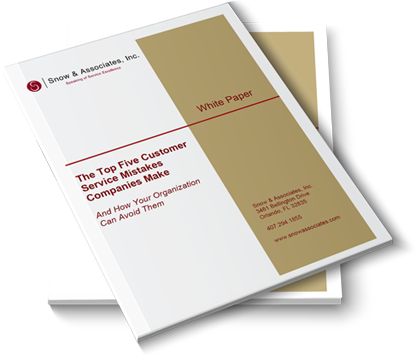
The Top Five Customer Service Mistakes That Companies Make
And How Your Organization Can Avoid Them.
Posted on March 8, 2011 by Dennis Snow
I’m not what you’d call a confrontational person. I don’t enjoy being involved in conflict, and I get uncomfortable when I see or hear others in conflict. I’m not sure why, it’s just the way I am.
But I also know that some of life’s best learnings can come as a result of conflict or disagreement. If the conflict ultimately raises our awareness and helps us (and others) to grow, while we might not like it at the time, some good has come out of the conflict.
Customers and Conflict
No organization is going to make every customer happy every time. Making every customer happy every time is a noble goal, but it’s not going to happen. Mistakes will be made, misunderstandings will occur, promises will be broken, and conflict will result.
I’ve written a few posts that relate to the topic of conflict, and how to handle it:
What to Do When Your Company Screws Up
A "Good Conflict" Is a Terrible Thing to Waste
Training employees on how to deal with conflict is vital. Effectively handling a frustrated customer’s problem can result in the customer feeling even more loyal to the organization.
Using Conflict to Become Better
All of this is great, but how can the organization become better because of the conflict? What can be learned, shared, improved so the likelihood of the problem happening again can be minimized or even eliminated? Or at a minimum, what can be learned about handling the problem when it does occur?
Here are a few approaches you can take to benefit from conflict:
Since customer conflicts will happen no matter how good your organization is, why not put them to use? A good conflict is a terrible thing to waste. And it is wasted if nothing is learned or improved as a result of it.
Some customer conflicts, of course, will have no long-term solution or process improvement. Sometimes the only benefit is learning how to stay cool under pressure. But many conflicts or challenges can be an organization’s best friends when they result in long-term improvements to the customer experience.
Something to think about: Does your organization or department focus on turning conflict into improvement?